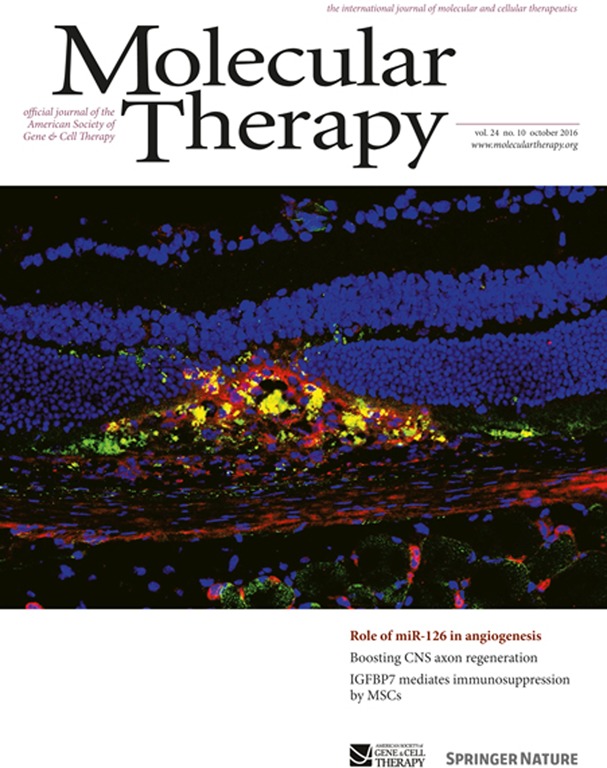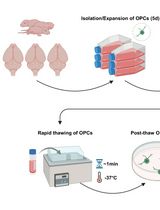- EN - English
- CN - 中文
A High-throughput Assay for mRNA Silencing in Primary Cortical Neurons in vitro with Oligonucleotide Therapeutics
体外使用寡核苷酸治疗药物对原代皮质神经元mRNA沉默的高通量测定
发布: 2017年08月20日第7卷第16期 DOI: 10.21769/BioProtoc.2501 浏览次数: 10677
评审: Longping Victor TseEhsan KheradpezhouhSébastien Gillotin
Abstract
Primary neurons represent an ideal cellular system for the identification of therapeutic oligonucleotides for the treatment of neurodegenerative diseases. However, due to the sensitive nature of primary cells, the transfection of small interfering RNAs (siRNA) using classical methods is laborious and often shows low efficiency. Recent progress in oligonucleotide chemistry has enabled the development of stabilized and hydrophobically modified small interfering RNAs (hsiRNAs). This new class of oligonucleotide therapeutics shows extremely efficient self-delivery properties and supports potent and durable effects in vitro and in vivo. We have developed a high-throughput in vitro assay to identify and test hsiRNAs in primary neuronal cultures. To simply, rapidly, and accurately quantify the mRNA silencing of hundreds of hsiRNAs, we use the QuantiGene 2.0 quantitative gene expression assay. This high-throughput, 96-well plate-based assay can quantify mRNA levels directly from sample lysate. Here, we describe a method to prepare short-term cultures of mouse primary cortical neurons in a 96-well plate format for high-throughput testing of oligonucleotide therapeutics. This method supports the testing of hsiRNA libraries and the identification of potential therapeutics within just two weeks. We detail methodologies of our high throughput assay workflow from primary neuron preparation to data analysis. This method can help identify oligonucleotide therapeutics for treatment of various neurological diseases.
Keywords: Primary cortical neurons (原代皮质神经元)Background
Oligonucleotide therapeutics represent a new class of drug that can target any genetically defined disorder, by silencing the expression of mutant proteins. Specifically, siRNAs are double stranded oligonucleotides that are loaded into the RNA induced silencing complex (RISC) and can silence mRNA before it is translated. However, unmodified siRNAs are unstable and cannot enter cells without the help of cationic lipid formulation, which can be toxic to primary cells such as neurons. In this protocol, we use self-delivering, hydrophobically modified siRNAs (hsiRNAs) for mRNA silencing. Recent progress in the chemistry of oligonucleotides has enabled the design of these stabilized hsiRNAs, which promote cellular internalization, efficient entry into RISC, and potent knockdown of target genes (Byrne et al., 2013; Alterman et al., 2015; Ly et al., 2017). These compounds contain 2’-O-methyl and 2’-fluoro modifications on all sugars and phosphorothioate backbone modifications; the oligonucleotides are often conjugated to a hydrophobic moiety, such as cholesterol, to support membrane binding and cellular internalization without toxicity. This new class of compounds offers researchers a straightforward method for silencing various genes in the context of biologically relevant, and hard to transfect, primary cortical neurons (Alterman et al., 2015).
Today, in the early stage of drug discovery, most high-throughput tests are performed in cell-based assays for lead oligonucleotide identification and validation. Cell-based assays improve and accelerate drug screening, providing more relevant in vivo biological information than biochemical assays and reducing the need for animal testing. High-throughput assays performed in primary neurons have emerged as a powerful tool to discover new therapies for the treatment of neurodegenerative disorders, such as Huntington’s disease (HD), amyotrophic lateral sclerosis (ALS) or Alzheimer’s disease (AD) (Sharma et al., 2012). Cell based assays using primary neurons provide a more natural (relevant) environment for studying neurodegenerative disorders than clonal neuronal lines. Transfecting oligonucleotide-based therapeutics into primary neurons generally relies on approaches such as electroporation (Mertz et al., 2002; Gresch et al., 2004; Zhang et al., 2016), viral transduction (Naldini et al., 1996; Hughes et al., 2002; Janas et al., 2006) or lipid-mediated transfection (Ohki et al., 2001; Dalby et al., 2004; Zhang et al., 2016). However, these methods can be laborious, show low efficiency, and induce cellular toxicity. Thus, the self-delivering properties of hsiRNAs represent an effective method to identify new leads in vitro in complex cellular models, such as primary neurons. We have recently demonstrated that hsiRNAs efficiently bind neuronal-cell membranes within seconds after treatment, enter cells, and induce potent gene silencing, both in vitro, in primary neurons, and in vivo, in mouse brain, all without the use of transfection reagents (Alterman et al., 2015; Ly et al., 2017).
Our laboratory has established a rapid high-throughput platform to identify and validate hsiRNA leads in primary neurons in vitro in 96-well format. To quantify the amount of target mRNA upon hsiRNA treatment, we use the QuantiGene 2.0 branched DNA (bDNA) assay, a high-throughput, 96-well plate-based mRNA quantification assay. This technique is designed to directly quantify the target mRNA from sample lysate without the need to purify the RNA, thus minimizing sample manipulation (Kern et al., 1996; Coles et al., 2015). This assay enables accurate and precise detection of even low abundance mRNAs, minimizing experimental variability and error (Collins et al., 1997; Canales et al., 2006). The combination of both self-delivering hsiRNAs and high-throughput quantification of mRNA accelerates the identification of efficacious oligonucleotides in primary neurons.
Here, we describe the workflow of this high throughput assay for performing large-scale screening and dose response validation of hsiRNAs in primary cortical neurons. We detail our methods for primary cortical neuron preparation in 96-well plate format (Figure 2), neuronal treatment with hsiRNA, assay plate management, mRNA quantification, and data analysis. This platform can be used for the screening of oligonucleotide therapeutics in primary neurons for the potential treatment of neurodegenerative diseases.
Materials and Reagents
- Poly-L-lysine pre-coated tissue culture treated 96-well plate (Corning, catalog number: 356516 )
- Deep 96-well sterile polypropylene plate (Corning, Axygen®, catalog number: 391-04-062 )
- Tips (from 0.2 μl to 1 ml) (VWR)
- Serological pipettes, individually wrapped (from 5 ml to 50 ml) (Costar)
- Fire-polished Pasteur pipet with cotton plug (made in-house)
- Tissue culture treated 10 cm dish (Corning, catalog number: 430167 )
- 50 ml conical centrifuge tubes (Corning, Falcon®, catalog number: 352097 )
- 15 ml conical centrifuge tubes (Corning, Falcon®, catalog number: 352098 )
- 1.7 ml microcentrifuge tubes (Genesee Scientific, catalog number: 22-282 )
- 1 ml sterile syringe (BD, catalog number: 309659 )
- Adhesive plate seals (VWR, catalog number: 60941-126 )
- Pregnant wild-type mice (THE JACKSON LABORATORY)
- Cholesterol-conjugated hsiRNAs (designed and produced in-house)
- Ice-cold block (Koolit® Refrigerants) (Cold Chain Technologies, catalog number: 305F )
- Poly-L-lysine (Sigma-Aldrich, catalog number: P4707 )
- Phosphate-buffered saline (PBS) (Mediatech, catalog number: 21-031-CV )
- 200-Proof ethanol (Decon Labs, catalog number: 2701 )
- DMEM cell culture medium (Mediatech, catalog number: 10-013-CV )
- Hibernate E (BrainBits, catalog number: HE )
- DNase I (Worthington, catalog number: 54M15168 )
- Papain (Worthington, catalog number: 54N15251 )
- Trypan blue stain solution (Thermo Fisher Scientific, GibcoTM, catalog number: 15250061 )
- QuantiGene 2.0 Assay Kit (Thermo Fisher Scientific, InvitrogenTM, catalog number: QS0011 )
- QuantiGene 2.0 Probe sets (varies by gene)
- Lysis mixture (Thermo Fisher Scientific, AffymetrixTM, catalog number: 13228 )
- Proteinase K (Thermo Fisher Scientific, AffymetrixTM, catalog number: QS0103 )
- Neurobasal medium NbActiv4 (BrainBits, catalog number: Nb4-500 )
- Fetal bovine serum (FBS) (Mediatech, catalog number: 35-010-CV )
- NeuralQTM medium (Sigma-Aldrich, catalog number: N3100 ) supplemented with GS21TM supplement (50x) (Sigma-Aldrich, catalog number: G0800 ), 0.5 mM dipeptide Ala-Gln (Sigma-Aldrich, catalog number: A8185 )
- 5’UTP (Sigma-Aldrich, catalog number: U6625 )
- 5’FdU (Sigma-Aldrich, catalog number: F3503 )
- Papain/DNase solution (see Recipes)
- Plating medium (see Recipes)
- Feeding medium (see Recipes)
Equipment
- Micropipettes from 0.5 μl to 1 ml (Labnet International, model: BioPetteTM Plus )
- Multichannel (8 or 12 channels) micropipettes from 10 μl to 300 μl (Eppendorf, model: Research® plus )
- Tissue culture incubator (Thermo Fisher Scientific, Thermo ScientificTM, model: HeracellTM 150i )
- Biological safety cabinet connected to vacuum (Thermo Fisher Scientific, Thermo ScientificTM, model: 1300 Series Class II, Type A2 )
- Bunsen burner
- Germinator 500 (Braintree Scientific, model: Germinator 500, catalog number: GER 5287-120V )
- Water bath at 37 °C (Fisher Scientific, model: Model 2332 )
- 4 °C fridge
- Microscissors (Fine Science Tools, catalog numbers: 14060-10 and 14002-12 )
- Set of two forceps (Fine Science Tools, catalog number: 11251-30 )
- Dissection microscope (Motic, model: SMZ168 Series )
- Pipet-aid (Drummond Scientific, model: Portable Pipet-Aid® XP )
- Tissue culture phase-contrast inverted microscope (Motic, model: AE2000 )
- Hemocytometer (0.1000-0.0025 mm2) (Neubauer)
- µPlate carrier (Beckman Coulter, model: SX4750 )
- Autoplate washer (BioTek Instruments, model: ELx405 )
- Refrigerated swing rotor benchtop centrifuge (Beckman Coulter, model: Allegra X-15R )
- Allegra X-15R rotor (Beckman Coulter, model: SX4750 )
- Plate reader spectrophotometer (Tecan Trading, model: Infinite M1000 Pro )
Software
- Microsoft Office Excel (Microsoft Office)
- GraphPad Prism 7 software (GraphPad Software)
Procedure
文章信息
版权信息
© 2017 The Authors; exclusive licensee Bio-protocol LLC.
如何引用
Alterman, J. F., Coles, A., Hall, L. M., Aronin, N., Khvorova, A. and Didiot, M. (2017). A High-throughput Assay for mRNA Silencing in Primary Cortical Neurons in vitro with Oligonucleotide Therapeutics. Bio-protocol 7(16): e2501. DOI: 10.21769/BioProtoc.2501.
分类
神经科学 > 细胞机理 > 细胞分离和培养
神经科学 > 神经系统疾病 > 动物模型
分子生物学 > RNA > RNA 检测
您对这篇实验方法有问题吗?
在此处发布您的问题,我们将邀请本文作者来回答。同时,我们会将您的问题发布到Bio-protocol Exchange,以便寻求社区成员的帮助。
提问指南
+ 问题描述
写下详细的问题描述,包括所有有助于他人回答您问题的信息(例如实验过程、条件和相关图像等)。
Share
Bluesky
X
Copy link











